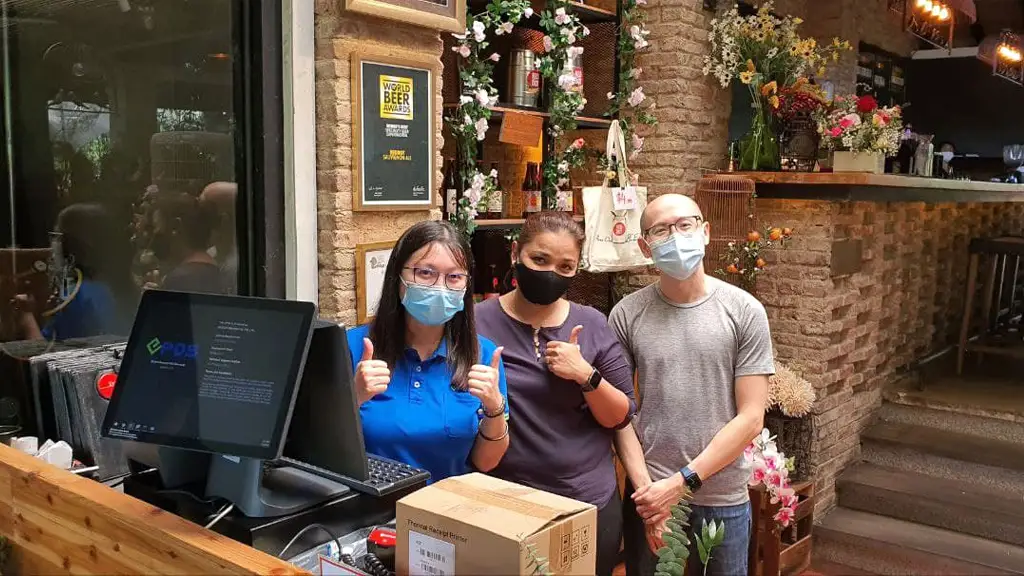Your Point of Sale (POS) system is the backbone of your business. It’s involved in everything from processing transactions and managing inventory to tracking sales and generating reports. An outdated or inefficient POS system can hinder your growth and even cost you money. Recognizing the signs that it’s time for an upgrade is crucial for staying competitive and providing the best possible customer experience. Here are the top 10 signs you need to upgrade your POS system:
1. Slow and Clunky Performance during Regular POS System Transactions
If your business’s POS system is constantly lagging, freezing, or crashing during regular financial transactions, it may be time for an upgrade to your POS system. Slow POS system performance frustrates both your staff and your customers, leading to long lines, lost sales, and negative impressions of your F&B or retail business. A modern POS system should be fast, responsive, and reliable, ensuring smooth and efficient operations.
2. Limited POS System Functionality
Does your current POS system lack essential features needed to run your business effectively? Perhaps it doesn’t integrate with your accounting software, lacks robust inventory management tools, or is unable to handle online orders. As your business grows and evolves, your POS system should be able to keep up. Upgrading to a POS system with more comprehensive features can streamline your F&B or retail operations and improve efficiency.
3. Difficulty Managing in-store Inventory
Are you constantly running out of popular items or overstocking less popular ones? Is manual inventory tracking taking up too much time and prone to errors? An outdated POS system often lacks sophisticated inventory management capabilities, leading to oversights in inventory management. A modern POS system can automate inventory tracking, provide real-time stock levels, and predict future demand, helping you optimise your F&B or retail inventory and minimise potential financial losses.
4. Inadequate Reporting and Analytics
If your current POS system is only able to provide basic sales data reports, such as hard numbers that mean nothing to your business, with no data analysis provided, you might be dealing with an outdated POS system. A modern POS system offers advanced reporting and analytics features, providing insights into sales trends, customer behaviour, and inventory performance. This data can help you identify areas for improvement, optimise pricing strategies, and make better decisions about your business. This, in turn, will allow you to increase business revenue.
5. Lack of Integration
Does your POS system operate in isolation from other crucial business applications, such as your accounting software, CRM, or e-commerce platform? This lack of integration can lead to data silos, manual data entry, and increased errors. A modern POS system should seamlessly integrate with your other business systems, automating data flow and improving overall efficiency.
6. Poor Customer Experience
A modern POS system can enhance the customer experience by enabling features such as mobile payments, digital receipts, and personalised promotions via loyalty programmes and personalised discounts. If your current business’s POS system is hindering your ability to provide a positive customer experience, such as offering personalised services, processing returns quickly, or managing loyalty programs, it may be a sign for an upgrade to your existing POS system.
7. Security Vulnerabilities in your POS System
Protecting customer data is crucial, and an outdated POS system can put your F&B or retail business at risk of data breaches. Modern POS systems offer enhanced security features, such as encryption and tokenisation, to protect sensitive information and ensure compliance with local government regulations.
8. High Maintenance Costs of your POS System
Are you spending a fortune on maintaining your outdated POS system? Are you constantly calling tech support to fix problems? An older POS system may require frequent repairs and upgrades, leading to high maintenance costs and ultimately taking a hit on your bottom line. Upgrading to a modern, cloud-based POS system can help to reduce maintenance costs over time and provides your F&B or retail business access to automatic updates and new features.
9. Difficulty Training Staff on your Existing POS System
Is your current POS system complex and difficult for your staff to learn? A complicated system can lead to errors, slow service, and frustrated employees and customers alike. Modern POS systems are designed to be user-friendly and intuitive, making it easier for your staff to learn and use the system effectively.
10. Scalability Issues
Is your current POS system struggling to keep up with your business growth? Does it lack the flexibility to handle increased transaction volumes or multiple locations? A modern POS system should be scalable and adaptable to your changing needs, allowing you to easily add new features, locations, or users as your business grows. Investing in a scalable POS system ensures that your POS system can support your future growth and expansion.
Upgrade your current POS System to EPOS’s Best POS System
By recognising these signs and taking the necessary steps to upgrade to a modern POS system, you can improve efficiency, enhance the customer experience, and position your business for continued success! With 16 years of experience in the POS system industry and over 6,000 POS system units in Singapore, EPOS is the leading choice in the F&B, retail and service industry. SMEs are eligible for up to 50% support for the adoption of EPOS Pre-Approved Solutions under the IMDA SMEs Go Digital programme. EPOS also offers Digital Marketing Solutions for SMEs seeking business growth, providing tailored marketing strategies catered to the unique needs of each business. Last but not least, keep your customers returning with the EPOS Loyalty Program, powered by WhatsApp.




